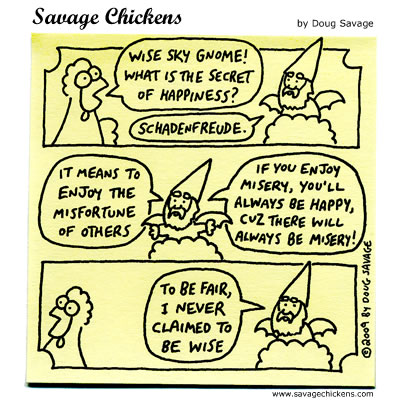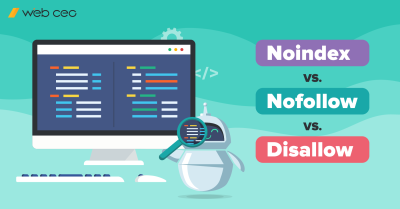
Ever since the day Google let its Panda loose on the hunting grounds of the Internet, writing great content for your website became an unquestionable priority. Even if you are just an enthusiast who doesn’t know a smidgeon of SEO. Do you run a blog? Make it interesting if you want visitors. Got something more complex, and maybe money is involved? All the more incentive to reach for the top. Panda itself isn’t so important. It only acts to give website owners an extra push, motivate them to try just a little harder than they are supposed to. You know: carrot and stick, conversions and Panda’s bamboo. But when the Panda hits you with a bamboo stick, it means it has to stop chewing. Then it gets upset and hits you even harder.
So let’s say you’ve realized your site is filled with bad content. Either from a drop in traffic, or you’ve realized this on your own. What’s a copywriter meant to do next? Identify the problem, naturally.
1. Your content is duplicate content
Blogging mistakes 101: slacking off.
There’s more than one way to cause trouble by copying content and pasting it elsewhere. The first and the most obvious is taking it from another site. Just like you can’t claim authorship of another author’s book and go unpunished, you can’t steal a chunk of text without consequences. Perhaps it’s because there aren’t many of us who like reading the same thing over and over again in several different places. Unless it’s a famous quote or a meme. Quotes that aren’t longer than a paragraph are fair game.
Then there’s keyword cannibalization. Sadly, it doesn’t involve keywords literally turning on each other and eating the loser – that would be quite a spectacle. When you use the same text on multiple pages of your site, it causes confusion for search engines. Suppose you have two such pages, which should be ranked higher than the other for the keywords inside the text? You don’t know, search engines don’t know, and your rankings wane as a result. That’s keyword cannibalization.
And lastly, it’s possible to assign the same titles and descriptions to multiple pages on your site and wonder why nobody can tell them apart (especially search engines who discern pages by their titles). Fortunately, tools like WebCEO’s Site Audit can help you find the source of the issue in the blink of an eye.
The solution is always the same. Problematic content can’t stay. Sometimes it’s enough to just take it down, but if you must have something that can bring you traffic in its place, you’ll have to write it with your own hands to the best of your ability. And when I say “the best”, I mean it.
2. Your content is outdated and obsolete
Now let’s talk the most basic SEO. Want to know the best way to get your site on the first page of any search engine and gain tons of traffic? That’s easy. All you have to do is put as many keywords in your site as possible. Especially the keywords meta tag. Just do it and boom! Instant number one!
…Oh wait, that doesn’t work anymore. Hasn’t since the late 90s.
The above paragraph shows the danger of outdated information. At the very least, it can be useless, in which case it’s simply a nuisance to your visitor. At worst, it can be outright harmful. The SEO tip I gave you would earn you a penalty from Google. What if it was medical advice instead? You could get seriously hurt if you followed it! And I would be asked to take it down.
Yesterday news in general is what potential readers aren’t interested in. In order to keep up with the times, we like information how we like our meals: fresh, spicy and hot! Unless you own a site dedicated to historical events. For contemporary insights, leveraging Online SEO tools can help you stay on top of current trends and effective techniques.
3. Your content is thin
Earlier, I said you should strive to write the best unique content you can, but what exactly counts as the best? As with duplicate content, there are a few ways to go wrong with composing something of your own. To name some of the flaws that may sneak into your original work:
- It’s uninformative: what’s it even about? If that’s the question that pops into the reader’s head first after they are done looking through a page, it’s a bad sign. It means the page failed in its purpose to bring an idea across. To avoid this, using tools like WebCEO’s SEO Content Assistant can be invaluable in crafting content that is both engaging and informative.
- It’s misinforming: similar to being outdated, but different. Lying is even worse than saying something that may have once been true and you didn’t know had changed. If you knowingly misinform, say by pretending you know this or that happened but you know you’re cutting corners, you will lose the audience’s trust. A dent in your reputation is as harmful online as anywhere else.
4. Your content is optimized for search engines, not humans
This is one of the first things everybody learns about SEO. If there was such a thing as the Ten Commandments of SEO, this would be an excerpt from it: “Thou shalt not optimize your site for search engines and forsake the user.” And yet, some SEOs reach for the low-hanging fruit, naively thinking that the search engines’ grace is all that’s needed. Well, I won’t deny it’s good while it lasts.
Don’t listen to the whisperings of the devil. Make the long-term investment and put your target audience first when you optimize your content. Then you might bask in the search engines’ grace for a little longer.
5. Your content has grammar and spelling errors and is poorly formatted
Would you like to read an article filled with grammar and spelling errors? Even if you say “yes,” I doubt you’d take such an article seriously or maybe even read it until the end. How about a page that looks like this?
A picture is worth a thousand words. Or a thousand nightmares.
Forgive me if I’ve made you feel uneasy. That was a vivid demonstration of content that shouldn’t be allowed to exist, let alone be used on your site. A prime example of how you should not format your text.
6. Your content distracts the visitor with ads and call-to-actions
Let me share a story with you. Years ago, when I was younger and less experienced in using the Web, I was browsing a humor site with funny pictures when a particularly annoying Flash ad suddenly went off. “Draw a card!” it said in a loud voice, startling me. “Draw a card! Draw a card!” It kept repeating those words with no intention of stopping. I looked for a way to mute it without turning my speakers off or, better yet, close it. There wasn’t any. Even after I clicked on it and a new window opened where there was nothing I wanted to see, the blasted thing still didn’t shut up. “Draw a card! Draw a card! Draw a card!”
Silence came only when I closed the tab, and five minutes later I installed an ad blocker. It wasn’t the most pleasant experience, but at least it taught me something valuable. Not just how to filter out annoying content, but also how it can be detrimental to all parties involved. Ads and call-to-actions must not distract visitors from what they actually come for on your site. Especially not above the fold.
7. Your content violates rules or guidelines
When users start sending complaints about your site and it gets flagged as inappropriate, there may be a teensy bit of a possibility you gave birth to a monster.
Even though for many of us the Internet is a way to take a break from the ever-demanding real life, rules of common decency still apply here for the most part. What offends people outside of their homes will most definitely offend them when they see it on a digital screen. And then you’ll find out that online anonymity doesn’t always guarantee non-accountability for your mischief.
You may or may not be getting on people’s nerves on purpose. If you are, I can only suggest that you stop and rethink your ways. If you are not, then listening to negative feedback may prove helpful before you have to stop and rethink your ways all the same.
As you can see, it isn’t Panda that matters the most. Your audience is the true and ultimate judge. It’s signals from them that alert the beast, it’s their approval that is your goal. And their needs aren’t some empty, meaningless whims that will do a 180 the day after you give them what they want. All you need to do to understand them is to put yourself in their shoes. You will see there is a simple pattern, and that its foundation is little more than common sense. As difficult as it may seem to produce high-quality content, it’s also incredibly easy, but if you need inspiration, then I recall WebCEO’s Project Overview has a nice DIY SEO checklist with lots of smart ideas. For bloggers in particular.




